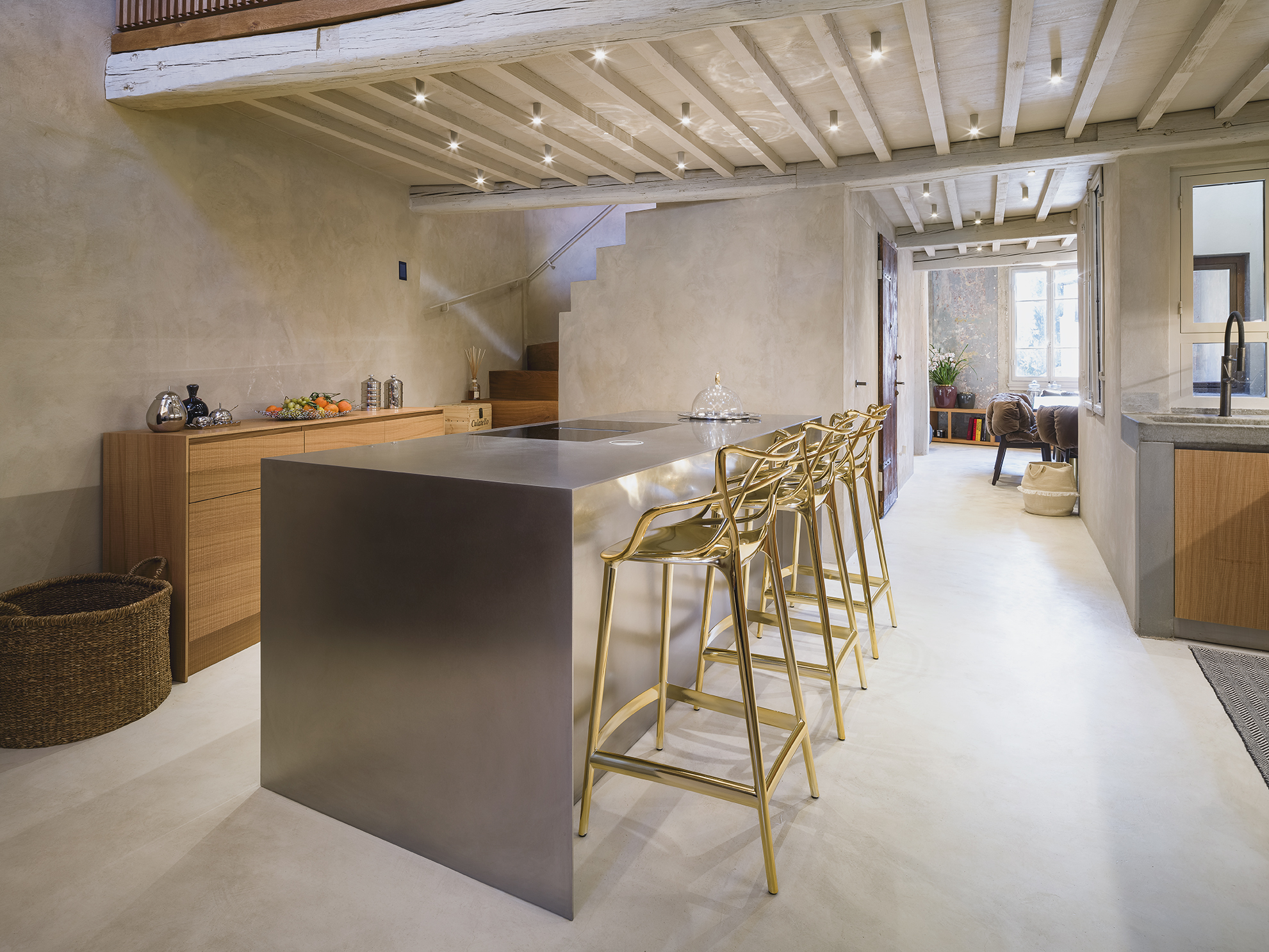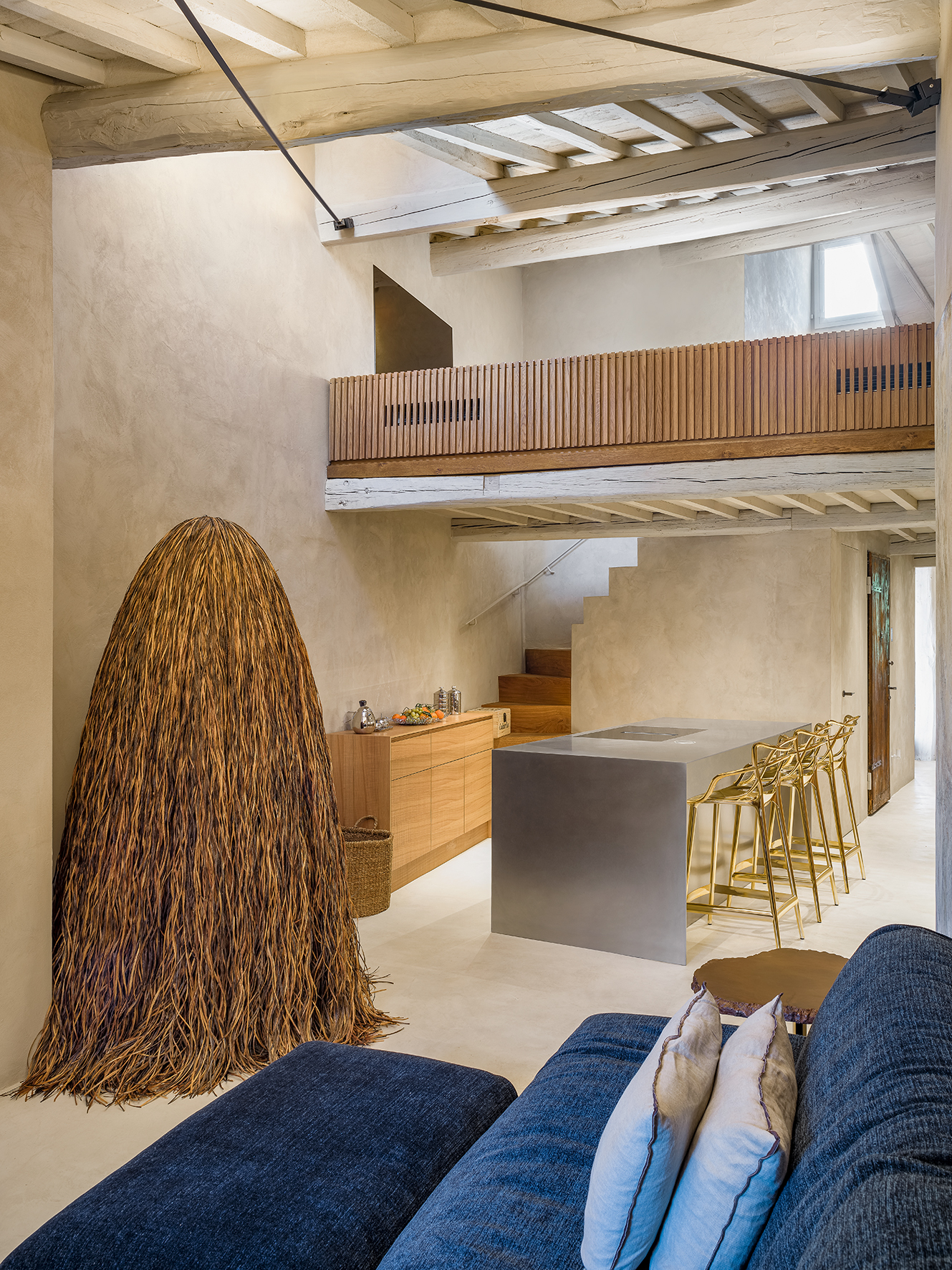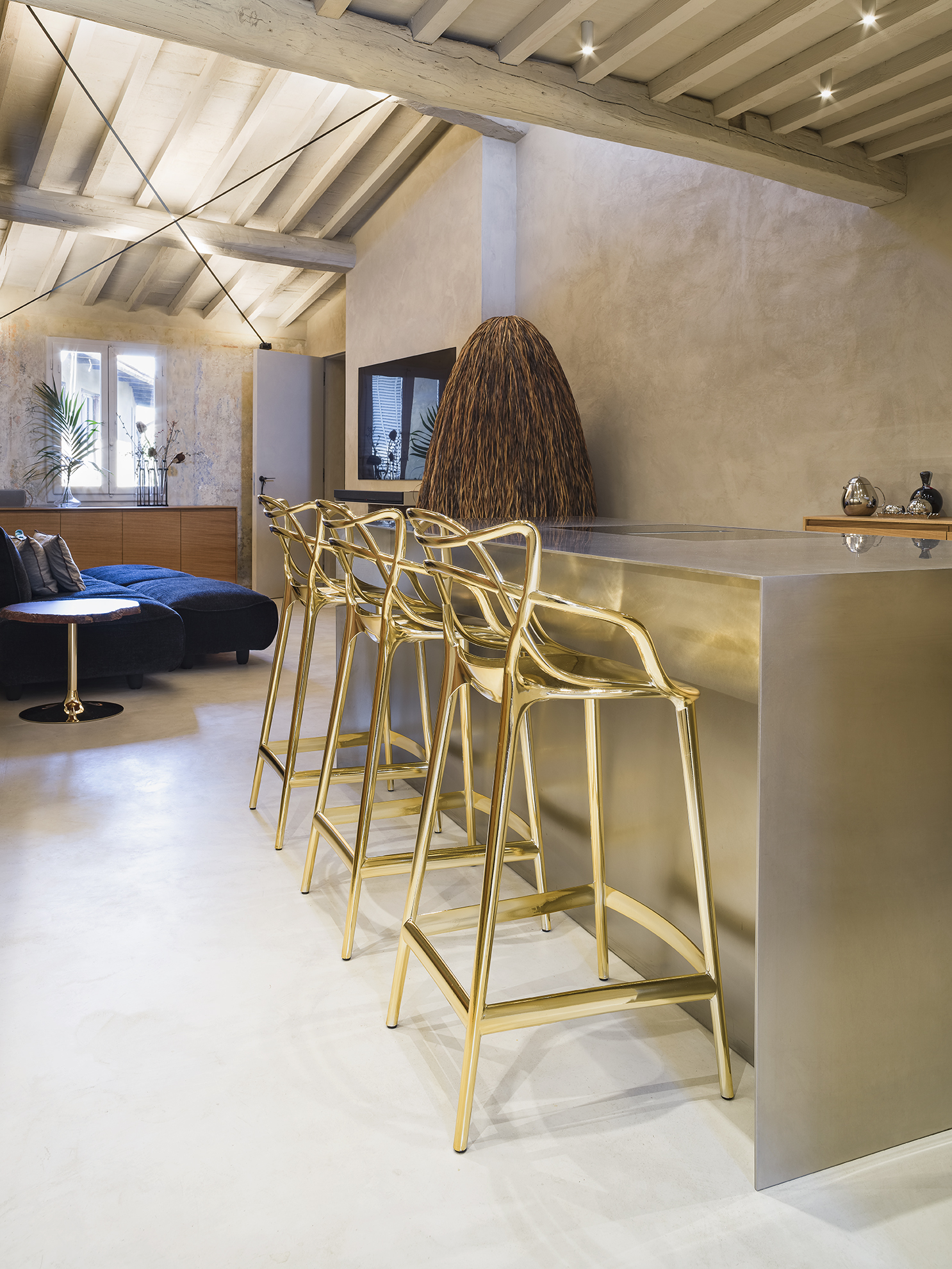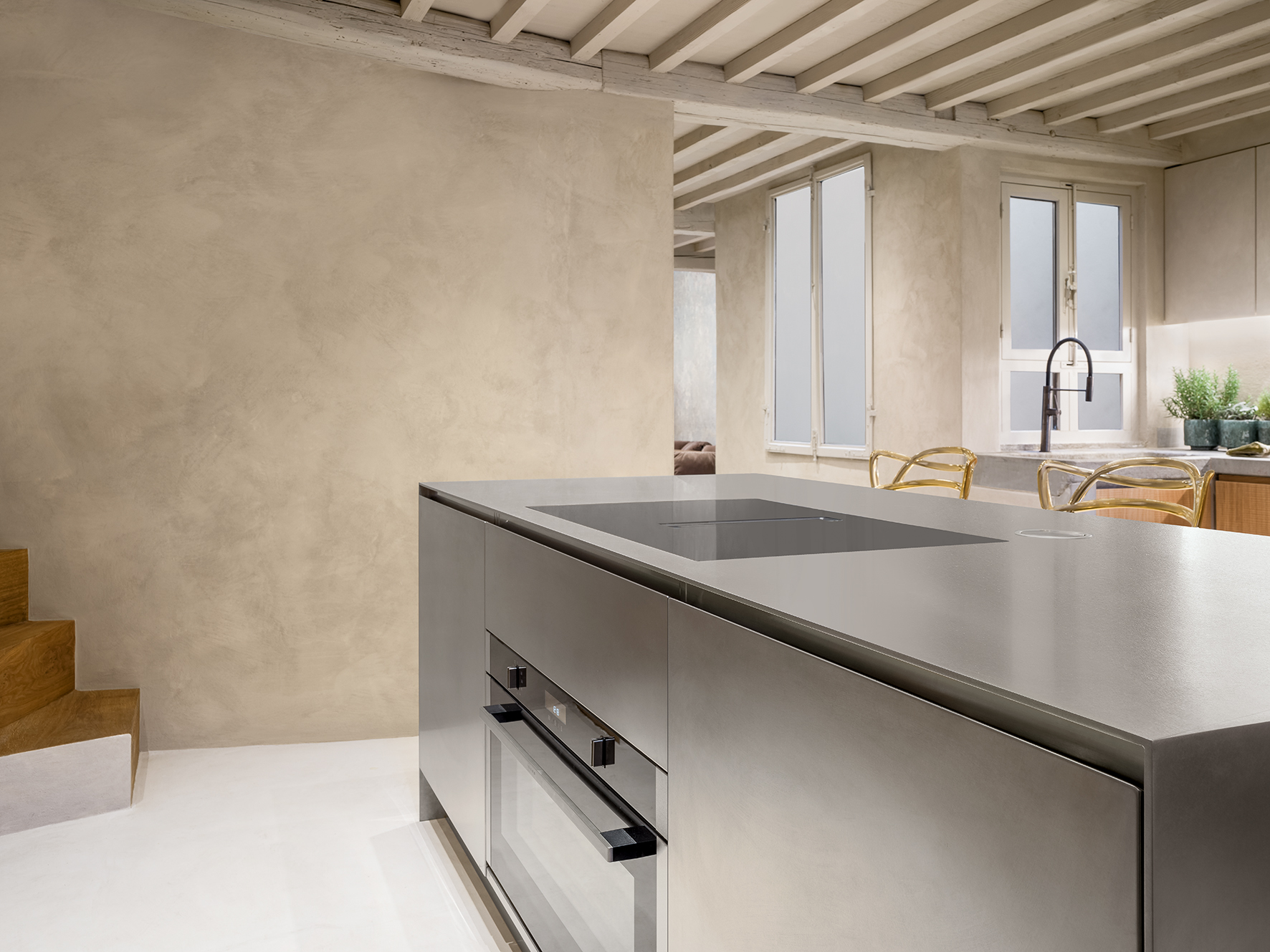
A Tuscan architect working for a prestigious Florentine studio, made this important Atelier kitchen by Abimis the main feature of her new house.
Or rather, her “ancient” house – in fact, it is a 16th-century building in the historic centre of Florence – which the designer has completely renovated. And where she recently decided to move in, on the third and top floor.
The architect, who personally dealt with the renovations, was overwhelmed by this attic floor (the original loft of the building), and immediately fell in love with it.

During the renovation work, an intricate web of old beams was discovered supporting the roof. A very charming structure whose potential the designer immediately recognised, despite the rather shabby wood…
And it was precisely these old beams, which enchanted her more every day, that made her desperately want to move to live here.
Her first job was to think about how to divide the spaces of her new attic. It isn’t a very large area, but more than enough for her.
The height of the sloping roof made it possible to create, in the central part, a practical double-facing mezzanine, where she placed her study and the bedroom.

In the area below she has left the spaces very open: on one side the kitchen and on the other the living room with an area for relaxing and the dining table. In the centre is the bathroom, staircase and a small window that illuminates the kitchen with soft and indirect light.
Once the structure was finished, it was finally time to think about the interior design.…
A lover of contemporary design and fine cuisine, she decided to put her two great passions at the heart of the design.
And she did this by designing as “neutral” an environment as possible. Both from the point of view of formal cleaning and from a colour perspective.
The room is characterized by a relaxing sand colour that creates a warm and bright atmosphere. A tone that starts from the concrete floor, continues over the brushed walls and ends up on the ceiling. The wooden beams and boards of the roof have also been painted in the same colour.

This creates a delicate and minimalist atmosphere. It does not hide the signs of the past (the beams, the openings, the old very thick walls) but actually highlights the few but selected furnishing features. Almost as though they were precious sculptures displayed in an art gallery.
The architect wished to position the kitchen at the heart of the house. The space where she likes to spend time cooking for herself and the closest friends she likes to invite.

Her final choice was the stainless steel kitchen from the Abimis Atelier line. A designer kitchen with clean and essential lines that blend well with the style of the house.
The island kitchen, a single block made to measure, was brought to the floor with a special crane, installed and finally tested by the technicians of the company from Veneto. This confirms the great attention Abimis places on the after-sales services of its kitchens.

In order to fit better with the setting, the owner chose a hand-orbited stainless steel kitchen. A finish that makes the steel warmer and “silky” to the touch and sight.
A thick top (made from a 6 mm slab) joins the two sides of the island. On one side is the cooking area, with an induction hob with integrated hood, a 90 cm oven and a small fridge built into the base. On the other side is the snack area for breakfast and quick lunches, enhanced by the golden “Master stools” stools by Philippe Starck and Eugeni Quitllet for Kartell.

Next to the kitchen, the unique “Cabana” container/sculpture designed by Fernando and Humberto Campana for Edra is featured. A sort of tribal hut, completely covered with a cascade of raffia threads. A spectacular design element that is reflected in the steel of the kitchen…